This article is part of the LIBSHOP white paper: the Mediterranean diet for iron health, the summary of which you will find here.
We have often been told that we should eat 5 fruits and vegetables a day. If this method is intended to encourage us to turn more towards products from agriculture and not towards processed products, then it seems commendable in order to tend towards a healthy lifestyle.
But once this stage is reached, we often tend to acclimatize ourselves to the same products, in more or less healthy quantities. We sometimes take advantage of this to consume high quantities of certain fruits rich in fructose every day, morning and evening, rather than favoring green vegetables, root vegetables or legumes for example, which have less impact on blood sugar levels.
✨
At the house of Libshop, we are specialized in the manufacture artisanal of mezzes, shawarma, falafel, Lebanese-inspired dishes and pastries for more than 10 years.
👉 Book your table at one of the Libshop restaurants in Paris
👉 Order Libshop for click & collect or delivery
✨

In the same way, when we think of fruits and vegetables, we don't necessarily think of "plants" in their entirety, which nevertheless include spices, herbs and other condiments that are often shunned, either through ignorance or laziness. Spices that are commonly found in Mediterranean cuisine, the one we are defending here and which is among the most effective cuisines for health and for the figure, but also in Indian and Asian cuisines, where Mediterranean cuisine actually originates from.
Gold, These spices are a nutritional treasure. When consumed in a holistic way, that is to say with other plants, they are likely to provide a bundle of invaluable health benefits. Not only because they contain micronutrients with beneficial properties, but also because by getting used to consuming them, we gradually move away from processed flavor enhancers that can be bad for our figure and our health.
Note: to simplify, we will consider here that the spice is a plant that seasons the dishes, that the herb comes to flavor a dish, and that the condiment enhances it via a strong flavor. Here, we will first look at spices, and more specifically the best of them, but we can look at herbs and condiments in another article.
But before listing this top 10 of the best spices for health, let's first see what the benefits of these spices are and why!
Spices are rich in polyphenols.
One of the main advantages of spices, condiments and herbs, and vegetables in general, but also tea or coffee for example, it is their richness in polyphenols, these compounds that you hear more and more about because their virtues have fascinated scientists, nutritionists and athletes for several years.
Polyphenols are compounds found in plants, which have antioxidant properties, that's to say effects that can delay the aging of our cells, and counter free radicals, which are in a way waste products produced by our cells during their functioning.
In other words, polyphenols can slow down aging, and therefore extend life expectancy, in particular by fighting against oxidative stress, that is to say the attacks produced by the cells of our body as part of their functioning.
Oxidative stress, kesako?
Small aside on oxidative stress. These "attacks" are not necessarily something bad in themselves. An intense sports session, for example, is experienced as an attack by our body, which leads to the production of free radicals.. And free radicals are precisely unstable molecules that the body must be able to neutralize after a certain period of time. And that's where polyphenols come in..

We took the example of a sports session, but the aggressions can take many other aspects. It can be an allergy, an inflammation, an anxiety, a period of stress, and even the disruptors and other pollutants linked to the modern lifestyle. And this is again where polyphenols act by reducing the effects of these aggressions, and by preserving the cells from the famous oxidative stress caused by these aggressions. But polyphenols, these treasures of nature, are not the only allies of our health. Vitamins and minerals are also essential, in proportions that are often unknown.
Spices are rich in vitamins.
We hear a lot about vitamins, and in the common imagination, we find them in fruit juices, sugary cereals or other nutrients whose daily nutritional value is sometimes questionable.
However, it is in plants that we find an interesting quantity of vitamins for the body, without any negative impact in terms of calories or impact on blood sugar. Moreover, contrary to what one might think, vitamins do not necessarily have an interest in being provided in the form of a "shoot" at a specific moment, but in a sustainable way, over time.
In short, vitamins are organic substances – unlike minerals, with which they share the fact of being micronutrients – which exert essential biochemical properties for the organism, which range from the regulation of metabolism to the release of energy, through the synthesis of bones, tissues, or even immunity.
Vitamins should not be taken in excess, because as always with humans, it's all about dosage and balance. The ideal is therefore to provide it naturally, through a healthy diet, little by little. You can also take supplements on the advice of your doctor during difficult periods, such as in winter for example, by respecting the indicated doses.
To return to plants, and more particularly to spices, you will have understood that these provide naturally and in reasonable doses the amount of vitamins the body needs to function.
It should be noted, however, that plants are not essential for survival, and that some products from the animal kingdom are denser in micronutrients. On the other hand, plants have the advantage of providing micronutrients without having to overconsume animal products, and in addition, they allow you to benefit from these micronutrients without assimilating additional calories, since they are in the majority of cases not assimilated by the body.
If plants such as spices or green vegetables or cruciferous vegetables are not assimilated, this means that they do not provide energy strictly speaking, as could conversely do plants belonging to the cereal family, or to that of root vegetables such as the potato. They therefore allow a supply of vitamins without excess calories, which does not mean that we should gorge ourselves on plants for fear of calories, but rather that they allow us to supplement the micronutrient intake of a plate that is already sufficient from an energy point of view.
And if plants such as spices and most vegetables pass through the intestine without being converted into energy, the fact remains that they provide the body with the phenolic compounds we talked about previously, vitamins, minerals we will talk about right after, but also bacteria that nourish our intestinal flora, also called intestinal microbiota.
Spices enrich the intestinal microbiota
Thanks to the fibers that compose them, spices can have an antimicrobial and antioxidant effect that has a positive impact the intestinal microbiota.
The intestinal microbiota is the set of microorganisms (bacteria, viruses, fungi and other microbes) that live in our intestine, mainly in the colon. It is a complex ecosystem that plays a fundamental role in our health, and influences digestive health, immunity, mood, and the synthesis of nutrients beneficial to the body.
A rich and diverse microbiota is a sign of good health, and with the industrialization of food, and exposure to many disruptors, it can happen that we alter the intestinal flora, and cause imbalances.
To rebalance your microbiota, several strategies are possible and we had already talked about it in a dedicated topic. In short, it may be useful to diversify your diet as much as possible with the regular consumption of vegetables, legumes and fermented foods such as sauerkraut. In some extreme cases, it may be wise to ban most of these foods initially in order to calm the inflammation, then reintroduce them one by one, in homeopathic doses at first, to get your body used to digesting them again.
In this respect, spices are among the most important plants to reintegrate into a diet, because in the event of a negative impact, their quantity being negligible, the impact will only be lighter. And in a person who does not have a significant problem with intestinal dysbiosis, spices are particularly beneficial for the microbiota.
For example, studies have shown that spices like turmeric, ginger, cumin, and cinnamon promote the growth of beneficial bacteria (like Lactobacillus and the Bifidobacterium), while reducing populations of pathogenic bacteria. This effect is due to the ability of spices to serve as a substrate for beneficial bacteria and their potential to rebalance the intestinal ecosystem.
Spices are rich in minerals.
The other health benefit of spices is their richness in mineral salts, which are micronutrients like vitamins.
However, the body needs them in infinitesimal quantities, and unlike vitamins, minerals do not come to us from living nature but from rocks and water. Thus, plants pull them from the ground.
Like vitamins, minerals act at the level of metabolism, the structure of the organism, and its functions (cardiac, muscular, neuronal, immune, etc.). This is why it is interesting to extract them from spices and plants, because these contain sufficient quantities for most of them, while supplementation can prove to be dangerous since beyond a certain threshold – difficult to achieve by sprinkling your chicken with ginger and eating salad – the minerals are toxic.
In addition, it is important to remember that minerals act in concert with vitamins.
The most famous mineral salts, which are generally lacking in our rather stressful modern societies, are: magnesium, closely followed by calcium for those who have banned dairy products, chrome, iron and zinc.
The virtues of magnesium and zinc, for example, are invaluable for the relaxation of the muscles, for the rest of the cerebral system, and therefore to be in better shape when your muscles, brain or nervous system are put to the test. Especially if you are a big coffee drinker! But in terms of supplementation, there are many forms that are more or less assimilable, the ideal being to choose a very high quality magnesium, benefiting from multiabsorption, but that is another subject…
In the same spirit, minerals, together with vitamins, are a fabulous support of the immune system, allowing it to fight against the appearance of infections with much more baggage.
Again, no need to draw a picture, by enhancing your dishes with spices, herbs, condiments, you will at least be tending towards a good rebalancing of your vitamins and minerals, with a view to better general health.
Which brings us to our ranking of the best spices to incorporate into your diet as soon as possible.
The top of the best Mediterranean spices for health
There is obviously a variety of spices and herb mixes that you can consume, and this classification is necessarily restrictive.
But if you had to keep only ten, here they are, and here they are especially with their main virtues, which will allow you to prioritize them according to your health terrain. They are also often considered as "superfoods" by naturopaths, scientists and nutritionists.
But beware, once again, it is by consuming them in a reasonable, holistic way, and in concert with other healthy foods, in a healthy lifestyle, that all of this will have a positive effect on your mind and your health!
In other words, there is no point in focusing on one ingredient and consuming it in excess, it would even be counterproductive. For example, polyphenols include various compounds that are not all identical and do not have the same effects on the body. It would therefore not make sense to consume the same ingredients all the time. It is by diversifying the contributions that we diversify the virtues and allow them to act together, with effects that we call "potentialized" effects in the jargon of nutrition enthusiasts.
1. Ginger
Ginger is the ultimate “superfood”. Originally from Asia, this spice, discovered probably more than 6,000 years ago and which needs no introduction, is anti-inflammatory and antioxidant, especially when eaten with garlic or onion, two other plants known for their medicinal properties.
Ginger also promotes cardiovascular health and improve the digestion. Rich in zinc, beta-carotene, vitamins B and C, it is known to be antibacterial, antiallergic, anti-inflammatory and help regulate fever.
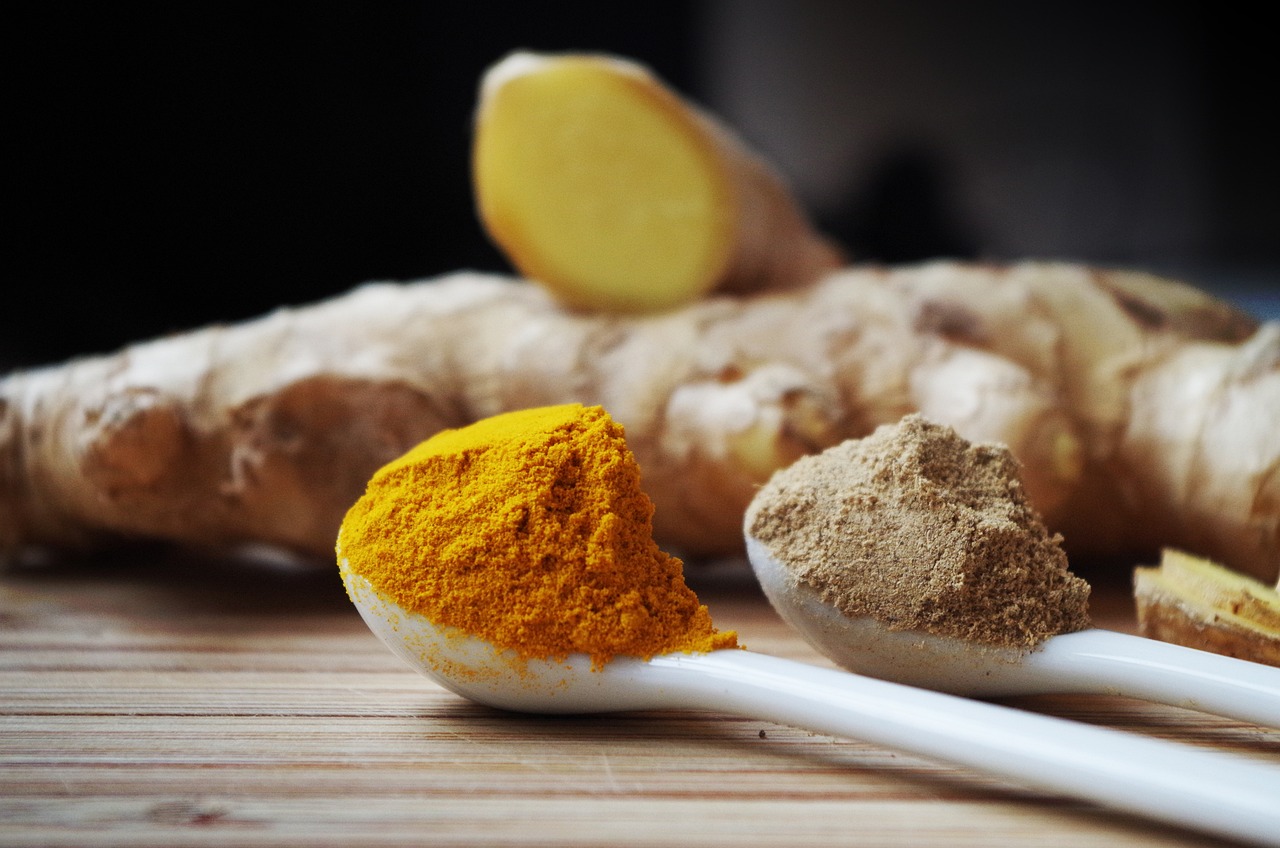
In summary, ginger will be the best ally against winter infections, and it could be a support – admittedly negligible, but a support all the same – for your heart and vascular health, also for fight against various types of inflammation, which ranges from post-sport recovery to allergies of all kinds. It is also an ideal plant for promote digestion, in herbal tea for example, or as a spice in your meat marinades.
2. Turmeric
Still in the flagship category of “superfoods”, turmeric is anti-inflammatory, antioxidant, improves digestion and protects the liver. We therefore take all the benefits of ginger, to which we add liver protection, oh so precious in our modern societies where the liver is put to the test, between excess sugar and meals that are sometimes too rich. As a reminder, the liver is an organ that detoxifies the body, and it unfortunately suffers most of the time in silence.
3. Chili pepper
We lend to the pepper antioxidant properties linked to its great richness in flavonoids (a family of polyphenols, always them) and in vitamin C. It would be anti-inflammatory, antioxidant, anti-cancer and it would be a regulator of blood sugar, via capsaicin, the active ingredient that gives peppers their taste… spicy!
In summary, if you digest it well, and you have an inflammatory background or you tend to over-solicit your insulin by eating foods rich in carbohydrates and sugars too often, you will not hesitate to consume chili pepper from time to time in order to give character to dishes while possibly reaping benefits.
4. Pepper
Again, the pepper is anti-inflammatory, it improves digestion, and it increases the production of endorphins, this hormone that provides a feeling of well-being. It's a very good antioxidant, which would have a beneficial action on the liver. Its beneficial properties are very similar to those of pepper, and we will not hesitate to sprinkle our dishes with pepper if we wish to improve our digestion, optimize our recovery and spare our liver, while having fun.
5. Saffron
Like turmeric or ginger, saffron is often considered a superfood. It has antioxidant and relaxing properties, and it improves digestion. It is rich in vitamins and minerals, particularly vitamin B6 (useful for hemoglobin, protein synthesis, lipid and glycogen metabolism), in iron (again for hemoglobin) and in magnesium, which has many benefits. It is precisely magnesium that is responsible for the relaxing benefits of saffron.
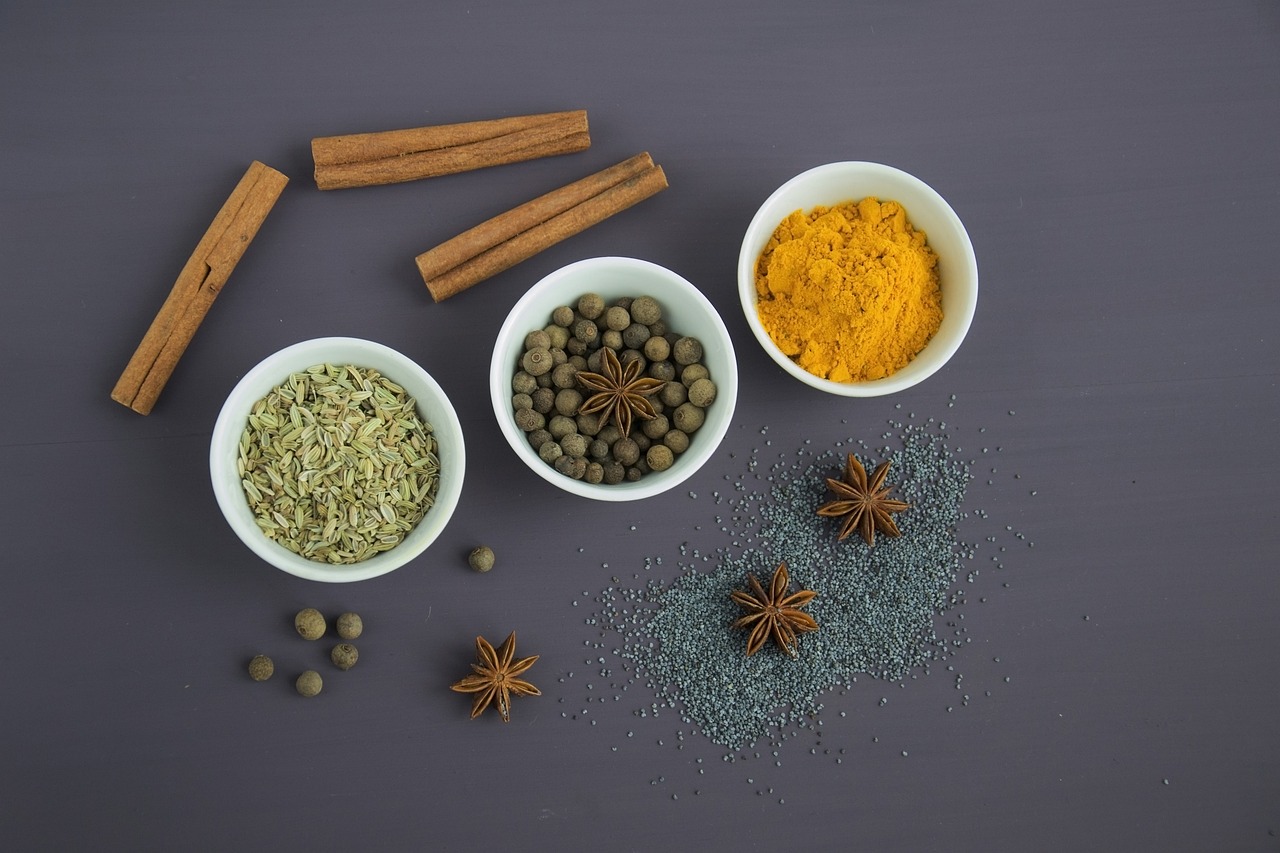
We will therefore favor saffron if, for example, we follow a predominantly vegetarian diet, or any other diet whatsoever, in order to derive benefits from its vitamin B6 intake, athletes will consume it for improve their recovery, people in a stressed or very active mood may also consume it in order to take advantage of its magnesium content, and finally to optimize your iron intake, especially during menstruation.
6. Sumac
This garnet-coloured spice, little known in Europe, is used as a flavouring for bring a note of acidity highly appreciated in Middle Eastern cuisine. It is particularly used in the preparation of Zaatar, a spice mix containing oregano and thyme. Sumac can be sprinkled on grilled meats, poultry or fish. But also in salads, especially the famous oriental fattoush salad.
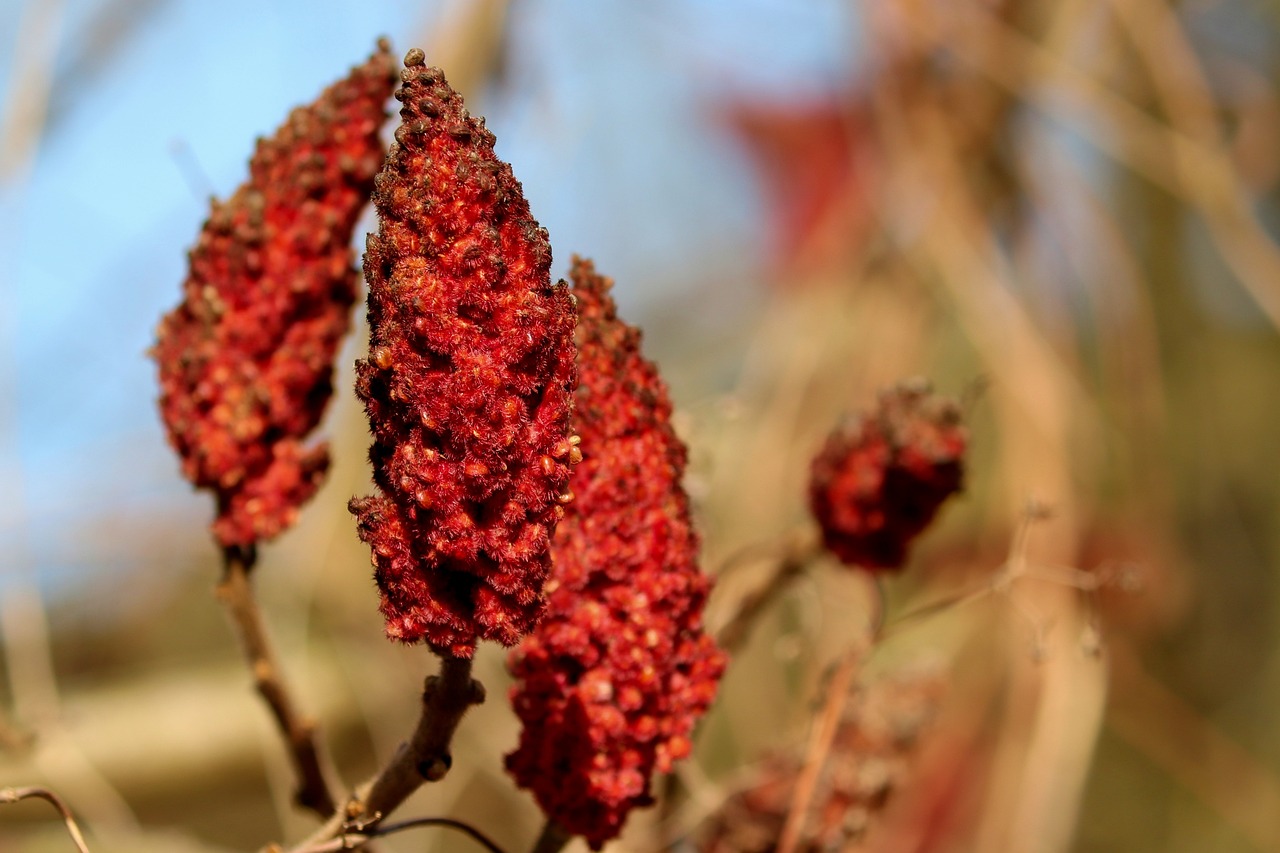
Sumac is renowned for its digestive, febrifuge (therefore anti-fever) and aperitif properties.. Studies conducted since the 1970s have shown its effect antidiabetic, antioxidant, anticholesterol, hepatoprotective, antiulcer, antibacterial, antifungal and anti-inflammatory. Just that.
Regarding its antidiabetic effect, studies have shown that sumac has strong hypoglycemic properties allowing reduction in blood glucose levels and improving glucose tolerance, which is extremely useful for diabetic and prediabetic patients, but also for those who – rightly – wish control their blood sugar to optimize their figure and their health.
7. Cumin
Again, an ancestral spice with medicinal properties. Cumin will be the best ally of people who wish improve their digestion. Cumin has positive digestive and diuretic effects, and it is also a good source of iron and magnesium. Ideal therefore for people with anemic tendency, and for those whose organism is put to the test, both physically and psychically. Magnesium will come to act on the relaxation of the muscles and on the nervous system in order to help them to recover.
8. Clove
Clove is considered by European phytotherapy as antiseptic, anti-infective and antibacterial. It will therefore be a good ally against infections of all kinds, but not only.
This spice is also very useful against urinary tract infections such as cystitis and kidney stones.
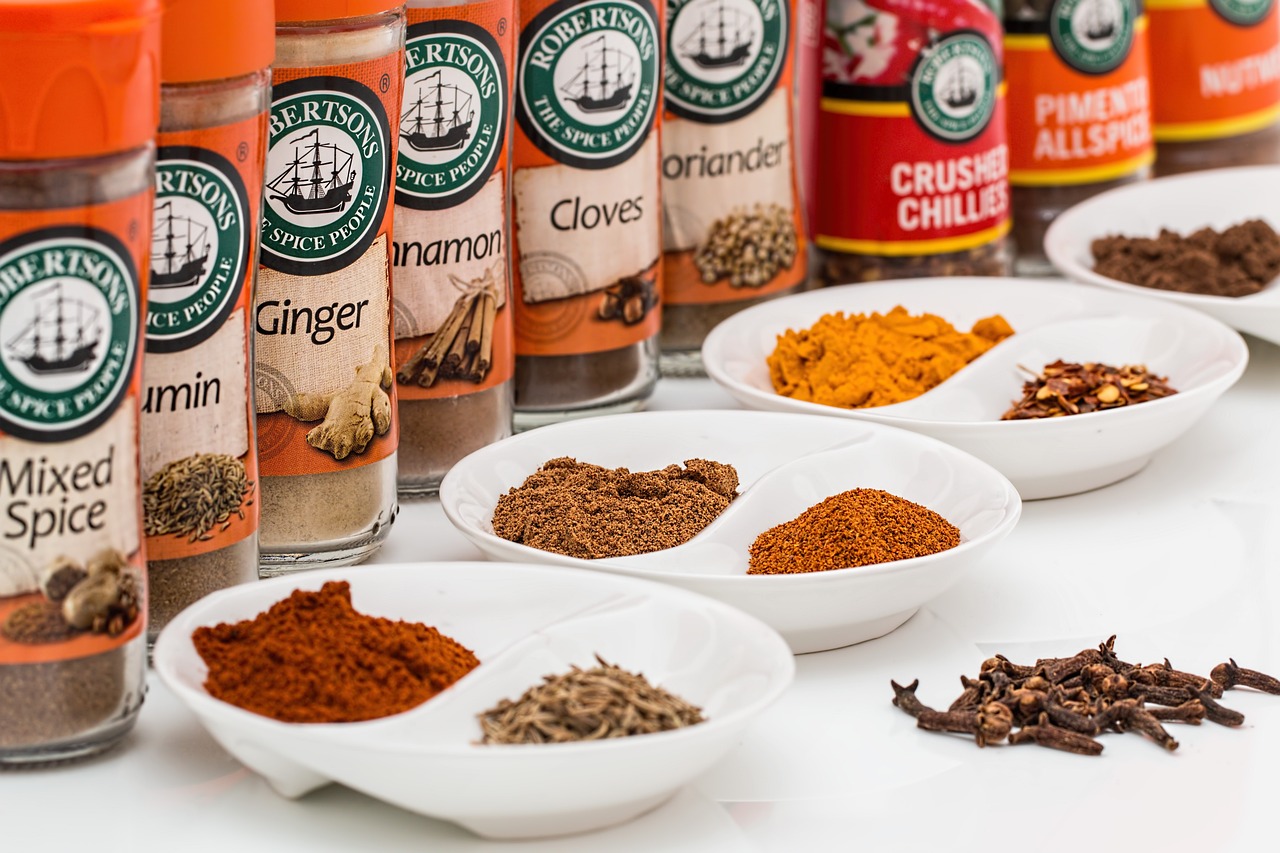
And finally, like the other plants mentioned here, it promotes digestion : its aromatic compounds help fight stomach aches, and it has a beneficial effect on dental pain.
However, be careful not to abuse it, because as always in nutrition, too much of it will be dangerous.
We can consume cloves in infusion or powder to spice up dishes and marinades.
9. Cardamom
Essential in Indian cuisine, where it originated, cardamom is an ancestral spice that is also used in certain Middle Eastern marinades, such as beef chawarma for example, like cloves. And just like the latter, we will consume a small amount, because excess can be harmful.
In terms of virtues, cardamom is a concentrate of benefits. It contains in particular:
- Calcium, essential for bone health, but also for other mechanisms such as muscle contraction, blood clotting or the release of certain hormones.
- Magnesium, for energy, sleep, the heart system and recovery. It is the electrolyte that we are sorely lacking in general.
- Potassium, for the heart system and blood pressure. Electrolyte which is often unbalanced with respect to sodium, often provided in excess by salt in the modern diet.
- Phosphorus for bones and energy.
- Iron, essential for cell oxygenation
- Zinc, mainly useful for immunity and protein synthesis
- And finally vitamin B2 and B6, for energy and the synthesis of hemoglobin in particular.
Thanks to the vitamins and minerals it contains, cardamom is also obviously antioxidant, but also anti-inflammatory, and above all, it helps to digestion, reducing bloating and stomach pain. Convenient for those who often have digestive discomfort or small intolerances.
10. Nutmeg
Like cardamom and cloves, nutmeg is found in certain oriental culinary preparations, but it is not very well known, wrongly. Indeed, this spice, again consumed in moderation, provides a lot of very interesting benefits for the body.
It is a good source of copper, useful for immunity, there synthesis of red blood cells and especially for the collagen. In other words, she's a good ally against infections, and for tissue renewal. It is also a good source of iron, zinc and antioxidants.
Nutmeg is also anti-inflammatory, and she aids digestion and also participate in bone consolidation thanks to its good calcium content.
Bonus: cinnamon
Another antioxidant spice to perfection. Cinnamon is a natural preventative against the development of certain cancers and other metabolic diseases linked to the aging of the body..
It is also a very good source of iron, essential for oxygen transport and the formation of red blood cells in the blood, which women sorely lack during their period. Cinnamon is a very good source of fibre, and it has anti-inflammatory and anti-microbial properties.
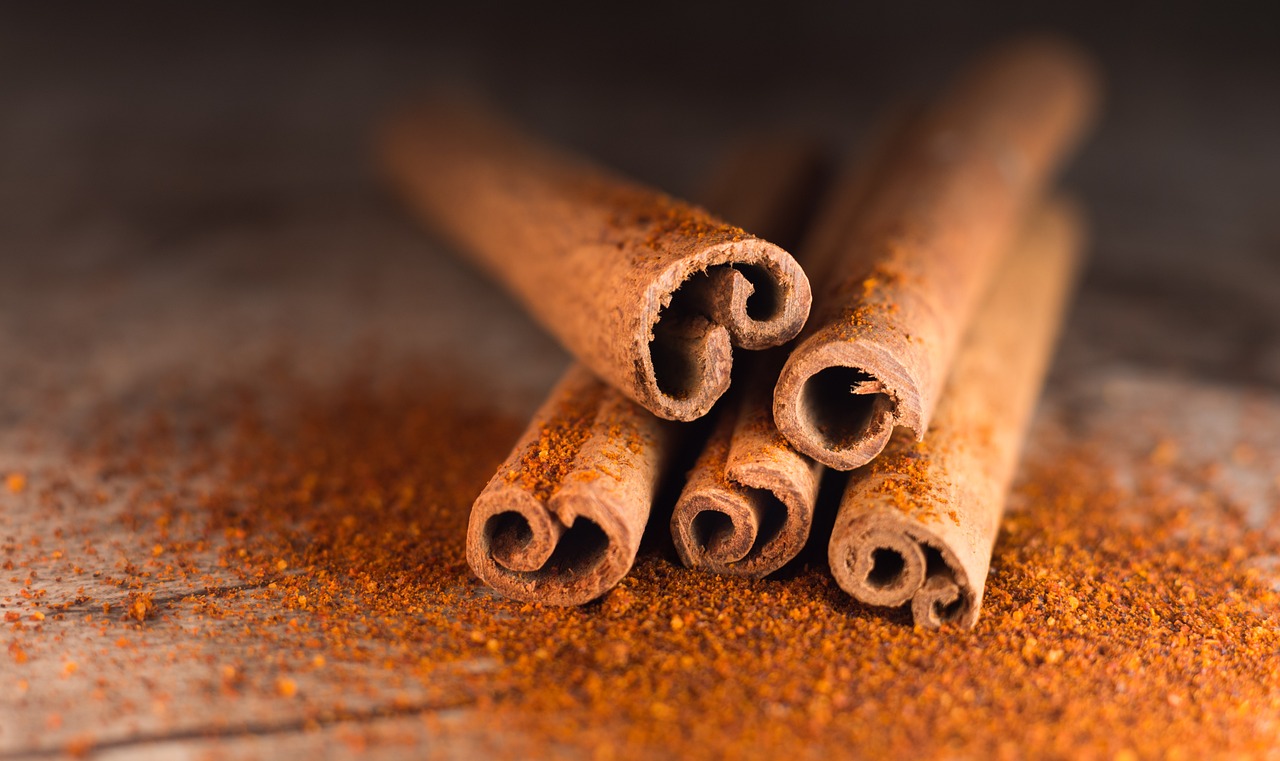
Finally, another benefit of cinnamon, and certainly not the least, it could lead to a significant decrease in blood glucose and certain blood lipids (total cholesterol, triglycerides, LDL cholesterol). Cinnamon thus appears to be a promising food for the control of diabetes, and as an ally in fat loss.
Finally, it is an interesting spice for the digestion, and it is considered by many nutritionists as a “superfood”. You can use it for your desserts, in a Greek yogurt for example.
Conclusion: in practice
As you will have understood, the first step to take is to let yourself go eat spicier dishes, going gradually and listening to his digestive system. Spicy doesn't necessarily mean hot, and most people confuse the two terms.. The spices are there to give flavor, from character to recipes, while good for health since they are natural.
The main advantage of using spices is that it allows you to avoid using other flavor enhancers that are less beneficial for your health, enhancers that are generally rich in sugar and salt, as well as other substances that have the unfortunate tendency to make foods that contain them very addictive, which gives them a taste that makes you want to come back for more.
So out goes industrial ketchup, excess poor quality salt, or addictive products like glutamate or excessively sweet sauces, and in comes healthy plants, which will not only recalibrate the palace to a simpler and more natural food, but also to support the body in terms of health.
This is the whole point of the use of spices in the kitchen. Spices, condiments and herbs are finally there for bring the palate back to flavors that are certainly less obvious, sometimes less addictive but much more subtle, although you can have a lot of fun with chilli, pepper, Guérande salt or other Indian, Asian, or even oriental spices like the famous Zaatar.
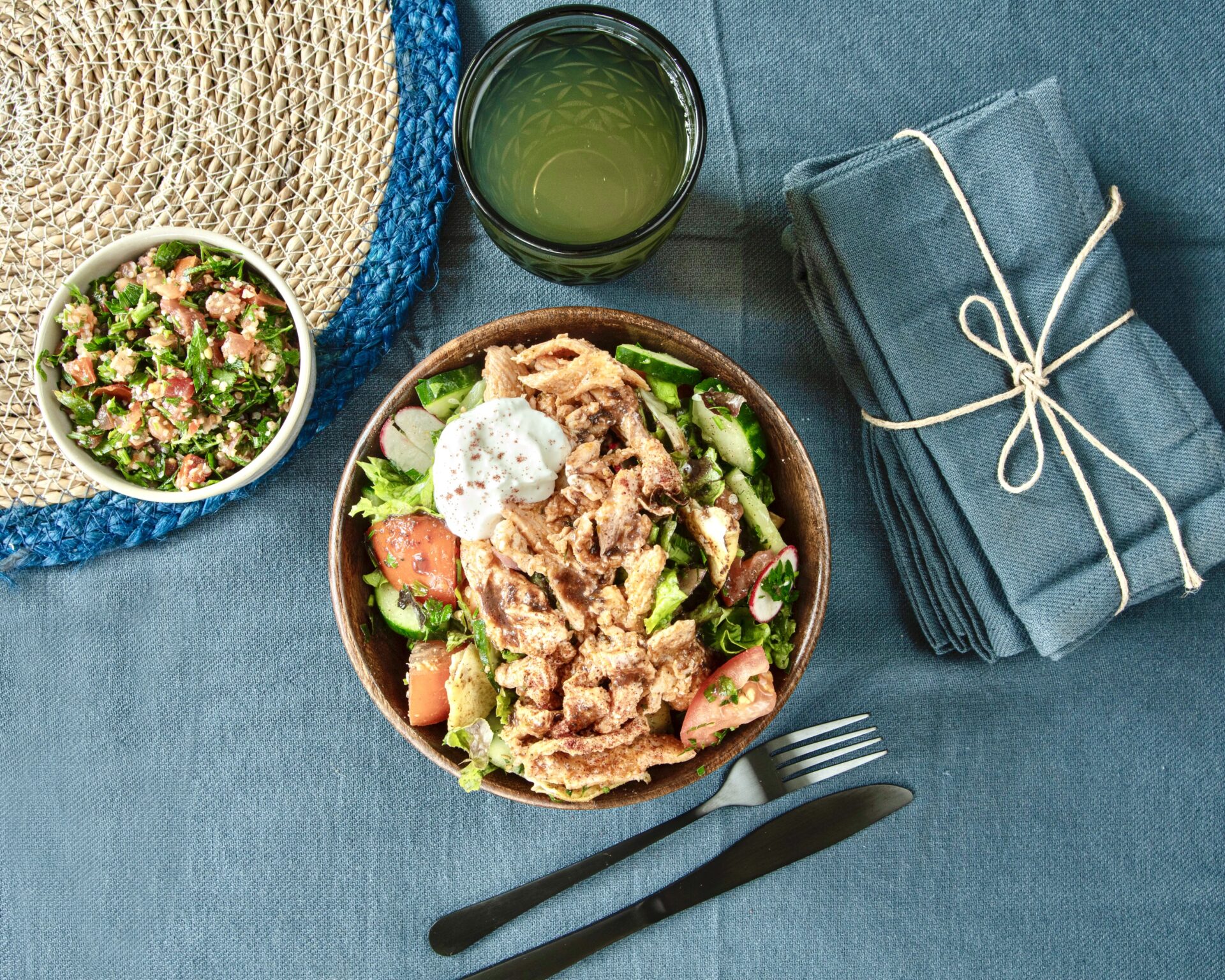
Without prohibiting yourself from consuming junk food from time to time, the idea is to bring the taste barycenter back to something much healthier in everyday life, less processed, more subtle and less addictive. Once accustomed to simpler flavors, sometimes also less accessible, like the acidic or bitter tastes that we then learn to cultivate, we come to really enjoy food, without needing to add a ton of industrial sweet-salty sauces.
If you made it to the end of the article, We remind you that the spices listed in this ranking are absolutely all used in the kitchens of Libshop restaurants, whether for the preparation of our mezzes (tabbouleh, hummus, eggplant caviar, tzatziki, etc.) or our marinated dishes (chicken shawarma, meat shawarma, Lebanese fassolia, falafels, etc.). They are what give flavor to our food, without any use of artificial flavor enhancers, sauces prepared by the industry or even excessively sweet and salty sauces.
Conclusion: spices are there to brighten up our palate in a healthy and natural way. So let's have fun!
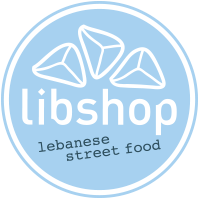

6 Responses
Thank you for providing such an insightful and well-researched blog post. Your expertise on the subject matter was evident, and I appreciated the practical examples you shared.
libshop.fr
https://libshop.fr › …
Health, well-being and healthy weight: the TOP 10 of the best …
Interesting article. The subject is well presented and the importance of spices well explained. It is an encouragement for me who is a consumer of spices.
I learned more and I think many others did too!
beautiful article, written with competence and knowledge, Grazie ha chi dà culture in qualsiasi campo.
Very interesting and very useful, it will certainly be useful to me immediately.
consider the benefits but not the amount to assume and per amount of time. How many things do I have?